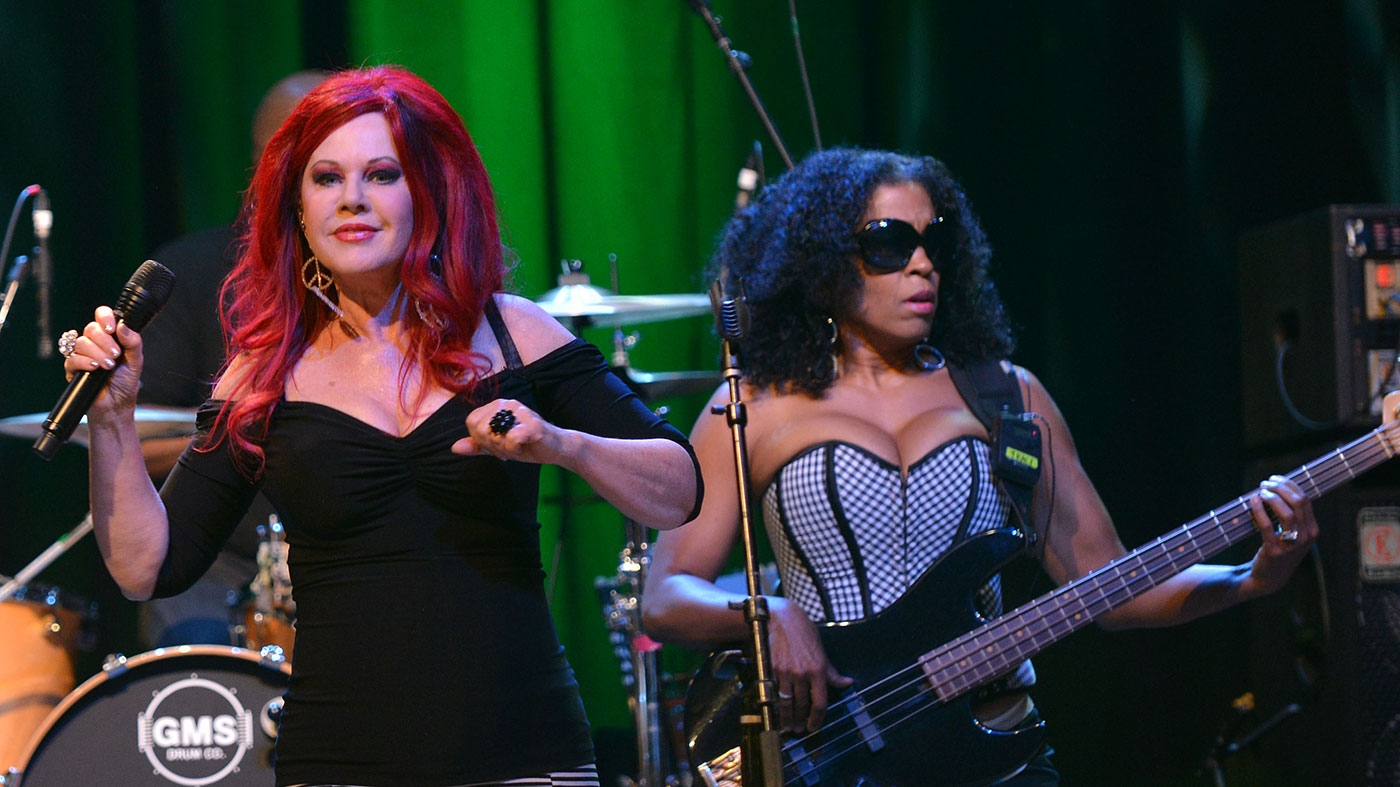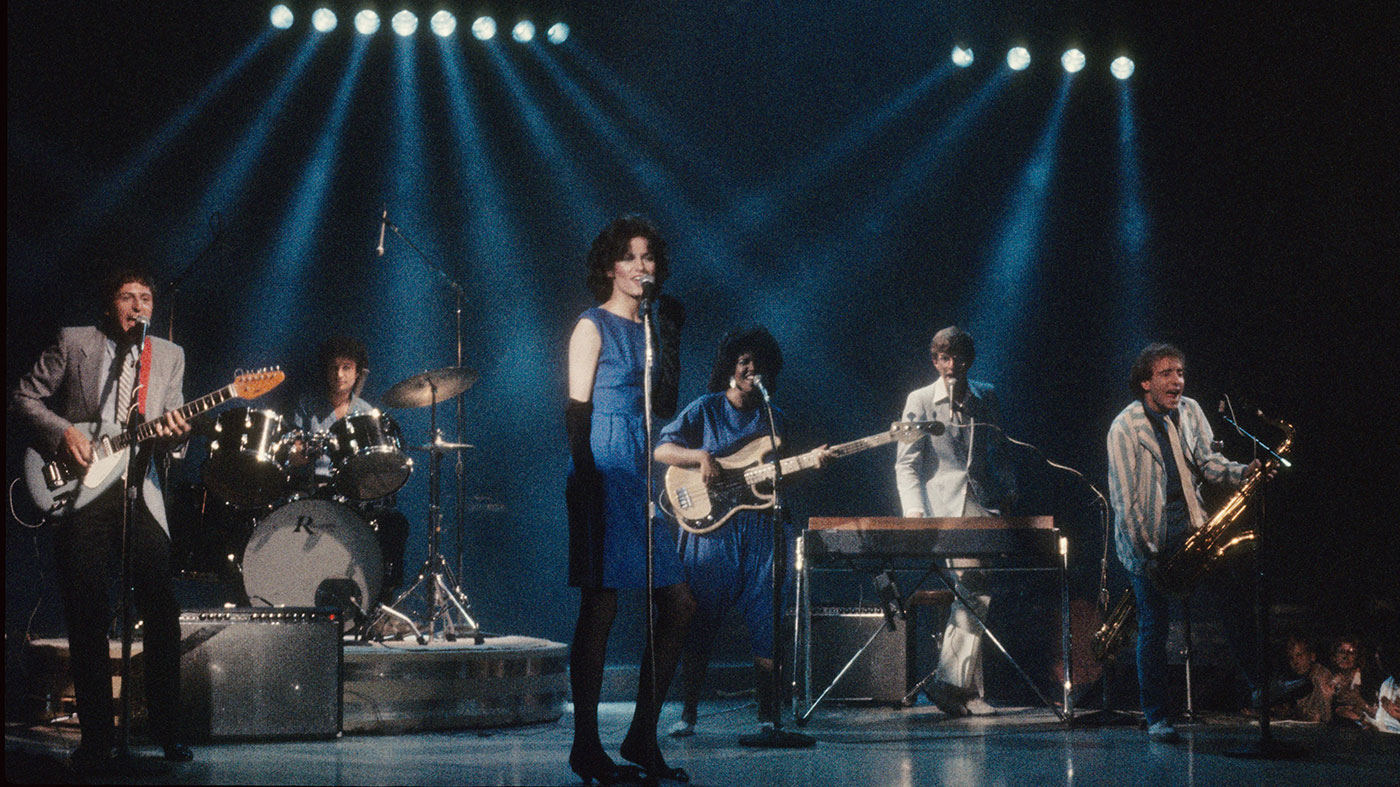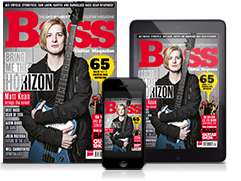The B-52s' Tracy Wormworth: “I came up in the fusion era, and there were so many amazing bass players at that time. I saw Jaco Pastorius many times”
The bassist talks Sting, The Waitresses and Rolling Stones auditions

If you ever get the chance to sit down and talk bass with Tracy Wormworth, we suggest you take it. She is hilarious, recounting events from her amazing career with amused disbelief and dropping names like there’s no tomorrow.
Behind the wit and humour, of course, there is a musician of world-class calibre, as demonstrated by her resume alongside a long list of huge-selling artists. Would you have the courage to play bass in front of Sting? Exactly - us neither. As Wormworth’s regular gig with the B-52s continues after 27 years and counting, we sit down with her for a frank look back...
Tracy, do you still enjoy touring after so long?
“Definitely. It’s pretty comprehensive with the B-52s. We’re really hitting it, like we did back in the day. Last tour we were flying around or doing long drives on show days, which was interesting. We went out with Culture Club, who had about three buses out, and we did it with SUVs and nice spinner vans. We usually travel, play, get up, drive to the venue and chill for a few hours before the show. It works pretty well.”
What bass gear are you using?
It’s really hard to find a five- or six-string bass that has the tone I want to hear. I’m looking for a warmer, Fender Jazz kind of sound
“I endorse Aguilar, so I’m using their DB 751 head with my Eden 4x10 SLT cabinets. I take two basses on the road with me: a 1991 fourstring Sadowsky, who I also endorse, and an old Japanese Fender Jazz that sounds great but weighs a ton - tough when you have a twohour gig. I mainly play the Sadowsky because it’s a lot lighter. It has a great tone which I love, and it’s really simple to EQ everything. One of Roger Sadowsky’s preamps is in it, he refreshed it a few months ago. I also endorse Apex strings.”
What other basses have you got?
Get the MusicRadar Newsletter
Want all the hottest music and gear news, reviews, deals, features and more, direct to your inbox? Sign up here.
“I’m not one of those people that goes crazy and buys basses everywhere I go, but I do have a bunch. I started on Fender but then went immediately to Sadowsky and pretty much stayed there, so I have a five-string Sadowsky, and a five-string fretless Paul Reed Smith, which Sting gave me. It was one of his rejects. It was pretty cool when he did it, and then I realised that he just didn’t want it. I was in the right place at the right time, haha!”
Are you equally happy with four and five strings?
“It’s really hard to find a five- or six-string bass that has the tone I want to hear. I’m looking for a warmer, Fender Jazz kind of sound. There’s a Latin bass player in New York named Rubin Rodriguez, and I love his sound, and he usually goes after the basses that I would go after. Whenever I go see him play, I make a note of whatever he’s playing.”

Fusion roots
What are the challenges of the B-52s gig?
“There’s a bass synth on some of the songs from the last album they did, so I’m playing along or around those tracks. They run in the background, along with some percussion and vocals. They’re unforgiving sometimes, because if I’m doubling it, the backing tracks’ time is way better than mine, haha! I’m one of those less-is-more type of players, and if there’s too much going on, I don’t want to add to the cacophony, so to speak. The other challenge is that we play really hard and loud on this gig. It calls for that kind of energy, because all the tunes are breakneck speed and it’s party party party!”
You’re from a musical family - your father Jimmy Wormworth is a renowned jazz drummer, and your brother James plays in the Conan O’Brien band. Which music influenced you as a bassist?
I came up in the fusion era, and there were so many amazing bass players in New York at that time. I saw Jaco Pastorius many times
“Definitely jazz and fusion. I was into Marcus Miller, and Byron Miller who played with George Duke. Anthony Jackson was one of my bass gods. I used to go see him play in clubs, and he had that Ken Smith bass that lit up - I called it the Christmas tree bass, because it had red and green lights on it. I could see the notes he was playing in my mind’s eye, because they were right in the centre of the note. His time is amazing.
“I came up in the fusion era, and there were so many amazing bass players in New York at that time. I saw Jaco Pastorius many times. I love all the famous Latin bass players too, like Bobby Valentin and Bobby Rodriguez who used to play with Tito Puente. The Cuban bass players were killing it too, it was ridiculous. Israel ‘Cachao’ Lopez was amazing, too.
“Nowadays, people get into bass from watching YouTube, so I was really lucky in that sense. I got the chance to be around a lot of great musicians. That helped me a lot in my formative years. When I started playing, I had no idea how much I sucked, and I didn’t care, haha! I had no fear and I had no shame. I wish that was something you could retain.”
How did you get started on bass?
“When I was a teenager, I was dating a guy who was a bass player, and he gave me my first bass, a Fender Precision, which I still have. I became obsessed with it and played it constantly. I’d wake up every day with the bass next to me and fall asleep at night with it still next to me. I got kinda crazy with it.”
Is it correct that your first success came with the Waitresses’ single Christmas Wrapping, released in 1981?
“Yes, but that song became popular way after the band broke up, haha! There are five sides to that story, of course, but I remember we recorded it in the summertime at Electric Ladyland in New York. Chic was really popular with Good Times, and that’s where the inspiration for that bassline came from. I was so inspired by what Bernard Edwards played. He was iconic. People have trouble playing what he played, even now.”
How did the Waitresses gig come along?
“I was playing with neighbourhood funk and fusion bands, and one day a friend of the Waitresses saw me when I was walking down the street with my bass. He told me they were looking for a bass player, so I called them and went down and auditioned. That’s how it started.”
Do you have happy memories of that band?
“Well, the Waitresses was my first paying gig. They had this song, I Know What Boys Like, which I didn’t play on because their bassist at the time was Dave Hofstra. He wanted to play experimental jazz, so I became their touring bass player. It was tough driving around in a van with all the equipment in the back, but it was a great experience because the music was so fun and I couldn’t believe I was getting paid to play bass!”
What happened after that?
“After the Waitresses I played with the R&B singer Phyllis Hyman for three or four years, and after that I was dating Kenny Kirkland, who was Sting’s keyboard player. One time, he was recording with Sting in Montserrat and I went down and hung out. Sting asked Kenny ‘Can she play?’ and Kenny was like, ‘Yes, she can play!’ So I joined the band, which was a larger-than-life experience for me, going from travelling around in a van to flying around in a private jet and arenas. We toured the world for about 14 months, from late 1987 through ’88.”
When did the B-52s come along?
“I auditioned for the Bs in 1990. Sara Lee, the British bassist, had recorded the Cosmic Thing album with them, and they had been touring hard a lot so she wanted to take a break and they needed a bass player. Another bassist who is a friend of mine, Alison Palmer, recommended me and I got the gig. I’ve been with them off and on ever since, as has Sara, with other things happening in between.”
Rolling call
Such as?
“Well, a lot of people don’t know this story! In 1991 I was working with a friend of mine on a musical, and I was workshopping it with him in a studio in Philadelphia. In the middle of it I got a call from the front desk, so I went down and picked up the phone. The person at the other end said ‘Hi, I’m with Mick Jagger’s management, and Mick would like to speak with you.’ I said ‘What? Okay!’ and made the call to Mick, trying not to lose it. He was super-nice and asked me if I wanted to come down and audition with the Rolling Stones.”
Pretty much the biggest gig in the world at the time…
Mick Jagger was super-nice and asked me if I wanted to come down and audition with the Rolling Stones
“Yes! Darryl Jones was the guy they wanted, but they were still auditioning other bass players. I was given a list of songs they wanted to do and I went down to the audition. As I arrived, Garry Tallent of the E Street Band was leaving, you know - it was that level of audition! I was like ‘What am I doing here?’, but I did the audition anyway. I think Charlie Watts really wanted Darryl because he had played with Miles Davis. Word came to afterwards that ‘Tracy is the one to beat’ and I was like ‘Get the hell out of here!’ It was really crazy. After that I played with Wayne Shorter on two tours in the USA, once as a quartet and then as a big band. The second tour was for the High Life album, where the music was completely otherworldly; I still don’t understand it because it was so far over my head. But Wayne is one of my musical gods.
“Then I played a lot with Joan Osborne, and then I joined The Rosie O’Donnell Show on NBC. They wanted a bassist who could do upright bass as well as electric, and I told them I’d do it even though I didn’t play upright. Ha ha! I borrowed an upright, went to the audition and luckily they just wanted me to groove on an electric. And that’s how I got the gig! And I did have to play upright once, but fortunately the song was in A so it was basically all open strings. No bowing. I was so thankful. I really dodged a bullet there. I was on that show for six years.”
Did you ever tell them that you lied your way into the audition?
“No. They’ll know now! Haha! But I’m sure the bandleader knew I wasn’t a real upright player, because we tried things like an electro-acoustic Zon bass. Anyway, there are miking issues with upright basses, especially on live TV. I got a chance to play with a lot of cool people on that show, which was awesome. So many great musicians came through there.”
What an amazing career you’ve had. Any injuries after all these years on bass?
“It’s been a little strange, but I’m grateful for it. I do upper-body weight training as often as possible, so I’ve never had any shoulder issues from playing bass, knock on wood.”
What ambitions do you have left to achieve?
“People ask me who I’d most like to play with, and I always say that I’ve already played with Wayne Shorter, and the rest of them - Miles, Monk, Tito Puente, Shirley Horn - are playing the big concert hall in the sky!”
The B-52s tour the USA in the autumn.


“I’m beyond excited to introduce the next evolution of the MT15”: PRS announces refresh of tube amp lineup with the all-new Archon Classic and a high-gain power-up for the Mark Tremonti lunchbox head
“These guitars travel around the world and they need to be road ready”: Jackson gives Misha Mansoor’s Juggernaut a new lick of paint, an ebony fingerboard and upgrades to stainless steel frets in signature model refresh







![PRS Archon Classic and Mark Tremonti MT 15 v2: the newly redesigned tube amps offer a host of new features and tones, with the Alter Bridge guitarist's new lunchbox head [right] featuring the Overdrive channel from his MT 100 head, and there's a half-power switch, too.](https://cdn.mos.cms.futurecdn.net/FD37q5pRLCQDhCpT8y94Zi.jpg)

